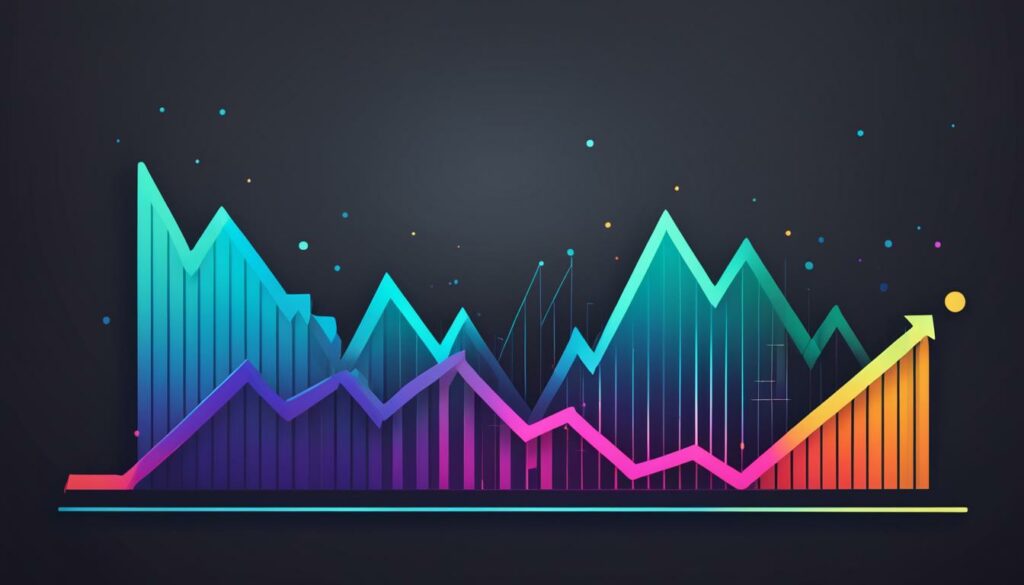If you have a WordPress website, you already know how important it is to optimize it for better performance and visibility. Whether you’re a beginner or an experienced user, implementing WordPress SEO tips and strategies can help you scale your website efficiently.
WordPress SEO Tips:
- Optimize loading speed to enhance user experience and search engine rankings.
- Implement website caching to reduce server load and improve page loading times.
- Enhance website security by regularly updating WordPress and installing SSL certificates.
- Optimize images to reduce file size and improve loading speed.
- Fix broken links to ensure a smooth browsing experience and proper indexing by search engines.
By following these WordPress SEO strategies, you can improve your website’s performance, attract more visitors, and rank higher in search engine results. In this guide, we’ll explore each of these tips in detail and provide you with practical steps to optimize your WordPress website.
Key Takeaways
- Optimizing loading speed is crucial for better user experience and search engine rankings.
- Implement website caching to reduce server load and improve page loading times.
- Regularly update WordPress and install SSL certificates for enhanced website security.
- Optimize images to reduce file size and improve loading speed.
- Fix broken links to ensure a smooth browsing experience and proper indexing by search engines.
Understanding the Impact of High Traffic on WordPress Performance
When your WordPress website experiences high traffic, it can have a significant impact on its performance. This can lead to slow loading times or even make your site inaccessible. Ultimately, this can negatively affect both the user experience and your search engine rankings.
Several factors can contribute to heavy traffic on your WordPress site, such as viral content, holiday sales, successful ad campaigns, or increased user interactions. To ensure your website can handle high traffic efficiently, it is essential to optimize various aspects of its configuration and performance.
Optimizing database loading is crucial for handling a large number of visitors to your website. This can involve employing efficient database caching techniques and optimizing your database queries to reduce the server load.
Implementing website caching is another effective strategy to enhance your site’s performance under high traffic conditions. By enabling page caching and object caching, your WordPress website can load pre-rendered versions of its pages and reuse frequently accessed objects, reducing the load on the server and resulting in faster loading times for visitors.
Furthermore, media resource optimization is vital to ensure your site can handle high traffic efficiently. Compressing images and utilizing appropriate image formats can significantly reduce the size of your media files. This helps improve loading speed, as smaller file sizes can be delivered more quickly to visitors’ browsers.
Lastly, employing high-end coding architecture can contribute to better performance under heavy traffic conditions. Optimizing your theme and plugins for efficiency, reducing unnecessary script execution, and minimizing server calls can all help improve your website’s ability to handle high traffic effectively.
Tips for Optimizing WordPress Performance under High Traffic
| Tips | Description |
|---|---|
| Optimize database loading | Use caching techniques and optimize database queries to reduce server load. |
| Implement website caching | Enable page caching and object caching to serve pre-rendered pages and reuse frequently accessed objects. |
| Optimize media resources | Compress images and use appropriate formats to reduce file sizes for faster loading times. |
| Use high-end coding architecture | Optimize themes and plugins, minimize unnecessary script execution, and reduce server calls for better performance. |
By following these WordPress SEO tips and optimizing your website to handle high traffic effectively, you can ensure a seamless user experience and maintain optimal performance even during surges in visitor numbers.
Improving Loading Speed for Better Performance
When it comes to your WordPress website, loading speed plays a crucial role in determining its performance and user experience. A slow-loading site can lead to higher bounce rates, lower rankings, and frustrated visitors. To ensure a seamless browsing experience and optimize your website for better performance, consider implementing the following strategies:
1. Optimize Images
Images are often the main culprits behind slow-loading websites. To improve loading speed, make sure to optimize your images. This involves compressing them without compromising their quality. You can use online tools like Compressor.io to reduce file sizes without sacrificing image clarity. Remember to also resize images to match their container dimensions, further enhancing loading speed.
“Optimizing images is a simple yet effective way to significantly enhance your website’s loading speed and overall performance.”
2. Enable Caching
Caching ensures that your website’s static content, such as HTML, CSS, and JavaScript files, are stored in a temporary location, reducing the need for repetitive requests to the server. By enabling caching, you can improve loading speed and overall performance. Utilize caching plugins like W3 Total Cache or WP Super Cache to enable page and object caching, reducing server load during traffic spikes.
3. Choose a Reliable Hosting Provider
Your hosting provider plays a significant role in loading speed and website performance. Ensure that your provider offers sufficient resources to accommodate your website’s traffic levels. Opt for a hosting plan that specifically caters to WordPress websites and prioritizes performance optimization. A reliable hosting provider will help deliver your content faster and ensure a smooth user experience.
4. Minimize External Scripts
External scripts, such as those used for analytics tracking or social media plugins, can contribute to slower loading speeds. Carefully evaluate and minimize the number of external scripts you use on your website. Remove any unnecessary scripts and opt for lightweight alternatives whenever possible.
5. Keep Your Website Updated
Regularly update your WordPress core, themes, and plugins to ensure that you have the latest features, bug fixes, and security patches. Updating your website not only improves performance but also helps protect against potential vulnerabilities.
6. Monitor and Optimize
Continuously monitor and analyze your website’s loading speed using tools like Google PageSpeed Insights. These tools provide valuable insights and recommendations for further optimization. Monitor loading speed metrics, such as time to the first byte, and address any areas that require improvement.
By implementing these strategies, you can significantly improve your WordPress website’s loading speed, resulting in better performance and enhanced user experience.
Implementing Website Caching
Website caching is a crucial technique that can significantly improve the performance of your WordPress site. By implementing caching, you can reduce the load on your server and enhance page loading times. With faster page load speeds, you can create a better user experience and improve your search engine rankings. In this section, we will explore different types of website caching and how they can benefit your WordPress SEO efforts.
The Benefits of Website Caching
Website caching involves storing and retrieving data to minimize the need for dynamic content generation on each page load. By caching your website, you can:
- Reduce server load and improve response times
- Enhance page load speeds and user experience
- Handle higher volumes of traffic during spikes without compromising performance
- Boost your WordPress SEO by improving site speed and user engagement
There are various caching techniques you can implement on your WordPress site, including:
- Page Caching: This caching method stores the generated HTML output of your web pages. When a visitor requests a page, the cached version is served, eliminating the need to regenerate the page every time. This significantly reduces server load and improves page load times.
- Object Caching: Object caching involves storing frequently used objects, such as database query results, in a cache. This reduces the need to retrieve data from the database, resulting in faster page rendering.
To enable caching on your WordPress site, you can take advantage of various caching plugins available, such as:
| Plugin | Description |
|---|---|
| LiteSpeed Cache | A powerful caching plugin that offers a comprehensive set of features, including page caching, database optimization, and image optimization. |
| WP Super Cache | A popular caching plugin that generates static HTML files of your WordPress site, which are then served to visitors, reducing server load and improving page load times. |
| W3 Total Cache | A feature-rich caching plugin that offers various caching methods, including page caching, object caching, and database caching. It also provides options for minification and content delivery network (CDN) integration. |
By implementing website caching with the help of these plugins, you can optimize your WordPress site for faster loading times and improved performance, ultimately enhancing your overall SEO efforts.
Next, we will explore another important aspect of WordPress website optimization: enhancing website security.

Enhancing Website Security
Ensuring website security is crucial for maintaining a reliable reputation and protecting user data. By implementing the following WordPress SEO tips and strategies, you can enhance the security of your WordPress website:
Regularly Update WordPress, Themes, and Plugins
To keep your website secure, it is essential to regularly update WordPress, themes, and plugins. These updates often include bug fixes and security patches that address vulnerabilities. By staying up-to-date, you can ensure that your website is protected against potential threats.
Use Secure Admin Login Credentials
When it comes to website security, strong admin login credentials are vital. Avoid using obvious usernames and passwords, as these can be easily exploited by hackers. Instead, create strong, unique passwords and consider implementing two-factor authentication for an added layer of security.
Install SSL Certificates
Encrypting data transmission between your website and users is crucial for protecting sensitive information. Install SSL certificates to enable secure HTTPS connections and ensure that all data transmitted through your website remains encrypted and protected from unauthorized access.
Remove Unused Themes and Plugins
Unused themes and plugins can pose security risks, especially if they are not regularly updated. Remove any themes or plugins that are not actively used on your website to minimize potential vulnerabilities. Additionally, regularly review and update the themes and plugins you do use to ensure they remain secure.
Install a Security Plugin
Adding a security plugin like Wordfence can provide an extra layer of protection for your WordPress website. These plugins offer features such as malware scanning, firewall protection, and brute force attack prevention. Implementing a security plugin can help safeguard your website from potential threats.
| WordPress SEO Tips | Benefits |
|---|---|
| Regularly update WordPress, themes, and plugins | Ensures your website is protected against vulnerabilities and potential threats. |
| Use secure admin login credentials | Prevents unauthorized access to your website and enhances overall security. |
| Install SSL certificates | Encrypts data transmission and protects sensitive information. |
| Remove unused themes and plugins | Minimizes potential vulnerabilities that could be exploited by hackers. |
| Install a security plugin | Provides additional security features like malware scanning and firewall protection. |
By following these WordPress SEO tips and implementing effective website security measures, you can ensure that your WordPress website remains protected and build trust with your users.

Optimizing Images for Faster Loading
Images play a crucial role in the overall weight and loading speed of your website. Large image file sizes can significantly slow down your website, leading to poor user experience and lower search engine rankings. To ensure faster loading times, it’s essential to optimize your images using various techniques.
Compressing Images
Compressing images is a highly effective method to reduce file sizes without sacrificing image quality. By utilizing web-based tools like Compressor.io, you can effortlessly compress your images while maintaining optimal visual appeal. Compressed images load faster, resulting in an enhanced user experience and improved website performance.
Resizing Images
Resizing your images to match their container dimensions is another essential step in optimizing image loading speed. When you upload images to your WordPress media library, ensure that they are resized proportionally to fit the container they will be displayed in. This eliminates the need for the browser to resize the image on the fly, leading to faster loading times.
Clearing up the WordPress Media Library
A cluttered media library filled with unused images can affect website performance. It’s important to regularly review and remove any unnecessary images from your media library. This not only frees up storage space but also ensures that only relevant and optimized images are being served to your website visitors.
TIP: Remember to always keep a backup of your original images before compressing or resizing them. This way, you can retrieve the high-quality versions if needed.
By implementing these image optimization techniques, you can significantly improve the loading speed of your WordPress website. Faster loading times enhance user experience, reduce bounce rates, and contribute to better search engine rankings.

| Benefits of Image Optimization: |
|---|
| 1. Improved website loading speed |
| 2. Enhanced user experience |
| 3. Higher search engine rankings |
| 4. Reduced bounce rates |
Handling Broken Links for Better User Experience
Broken links can have a detrimental effect on user experience and hinder search engine crawlers from indexing your website effectively. It is essential to identify and fix these broken links to ensure a smooth browsing experience for your users and proper indexing by search engines.
To identify broken links on your WordPress site, you can leverage powerful SEO tools like Ahrefs and Google Search Console. These tools can scan your website and provide detailed reports on any broken links they find.
Once you’ve identified the broken links, you can take action to fix them promptly. One approach is to edit the link address manually, ensuring it points to the correct destination. Alternatively, you can use handy WordPress plugins like Broken Link Checker. These plugins can automatically detect and fix broken links within your website, saving you time and effort.
By actively managing and fixing broken links, you significantly enhance the user experience of your website visitors. They can navigate your site seamlessly, accessing the content they desire without encountering frustrating dead-end links.
Pro Tip: Regularly check your website for broken links using SEO tools and plugins. By fixing broken links promptly, you provide a positive user experience and boost your WordPress SEO efforts.
Advantages of Fixing Broken Links:
- Improved user experience: Broken links disrupt the user experience, leading to frustration and increased bounce rates. By fixing them, you create a seamless browsing journey for your visitors.
- Enhanced SEO performance: Broken links can hinder search engine crawlers’ ability to index your webpages effectively. By fixing broken links, you ensure that your website is properly crawled, which positively impacts your search engine rankings.
- Higher credibility and trust: Websites with broken links can appear unprofessional and unreliable. By keeping your links up-to-date, you establish trust with your audience and solidify your website’s credibility.
Investing time and effort into fixing broken links contributes not only to better user experience but also to the overall health and performance of your website.
Tracking and Analyzing Website Performance
Tracking and analyzing website performance is essential for identifying areas of improvement and catching potential issues. By utilizing website analytics tools like Google Analytics, Pingdom, and Site24x7, you can effectively monitor your website’s performance, track user behavior, and receive alerts for any issues that may arise.
These website analytics tools offer valuable insights into various aspects of your website’s traffic, allowing you to make data-driven decisions when it comes to optimizing your site for better performance and scalability.
- Google Analytics: It provides comprehensive analytics, allowing you to track key performance metrics, user engagement, and conversion rates. With Google Analytics, you can gain valuable insights into your website’s audience demographics, traffic sources, and popular content.
- Pingdom: This tool offers monitoring services to track your website’s uptime, loading speed, and performance from different geographical locations. It helps you identify bottlenecks in your website’s performance and provides actionable insights to improve overall user experience.
- Site24x7: It is a comprehensive monitoring tool that tracks not only your website’s performance but also server health, application monitoring, and network performance. It offers features like real-time monitoring, alert notifications, and detailed reports.
With these website analytics tools, you can gain a deep understanding of your website’s performance, identify areas that require optimization, and implement effective strategies to enhance your WordPress website’s SEO and overall user experience.
Conclusion
Scaling your WordPress website efficiently is essential for handling high traffic and improving overall performance. By implementing the WordPress SEO tips and strategies discussed in this guide, you can optimize various aspects of your website, such as loading speed, caching, security, image optimization, and user experience. Regularly monitoring and analyzing your website’s performance will help you identify areas for improvement and ensure ongoing scalability.
With these best practices, you can enhance your WordPress website’s visibility and rankings in search engines. Focus on improving loading speed by optimizing images, enabling caching, and ensuring your hosting provider can handle traffic spikes. Enhance website security by regularly updating WordPress, using SSL certificates, and installing a security plugin. Additionally, handle broken links to improve user experience and ensure proper indexing by search engines.
Tracking and analyzing website performance using tools like Google Analytics will provide valuable insights to make data-driven decisions for optimization. Remember, improving website performance is an ongoing process, and by following these WordPress SEO tips, you can create a scalable website that can handle high traffic and deliver an excellent user experience.
FAQ
Q: What is scaling in WordPress?
A: Scaling in WordPress refers to optimizing various aspects of your website to handle high traffic and maintain performance. It involves improving loading speed, caching, security, image optimization, and handling broken links.
Q: How does high traffic impact WordPress performance?
A: High traffic can slow down or make a WordPress website inaccessible, leading to a poor user experience and lower search engine rankings. It is important to properly configure your website to handle high traffic by optimizing database loading, visitor handling, caching, and coding architecture.
Q: How can I improve the loading speed of my WordPress site?
A: To improve loading speed, you can use speed analytics tools like Google PageSpeed Insight to identify areas for optimization. Strategies include optimizing images, enabling caching, and ensuring your hosting provider has sufficient resources to handle traffic spikes.
Q: What is website caching and how can it help?
A: Website caching is a technique that involves storing and retrieving data to reduce server load and improve page loading times. WordPress offers various caching plugins that enable page caching and object caching, such as LiteSpeed Cache, WP Super Cache, and W3 Total Cache.
Q: How can I enhance the security of my WordPress website?
A: To enhance security, regularly update WordPress, themes, and plugins to receive the latest bug fixes and security patches. Use secure admin login credentials, install SSL certificates for data encryption, remove unused themes and plugins, and consider using a security plugin like Wordfence.
Q: How can I optimize images for faster loading?
A: Optimize images by compressing them to reduce file size without significant loss of quality. You can use web tools like Compressor.io for this purpose. Additionally, resize images to match their container dimensions and remove unused images from the WordPress media library.
Q: How do broken links affect website performance?
A: Broken links can negatively impact user experience and prevent search engine crawlers from indexing your website. Use WordPress SEO tools like Ahrefs and Google Search Console to identify broken links, and fix them by editing link addresses or using plugins like Broken Link Checker.
Q: How can I track and analyze my website’s performance?
A: Use website analytics tools like Google Analytics, Pingdom, and Site24x7 to monitor your site’s performance, track user behavior, and receive alerts for any issues. These tools provide valuable insights for optimization and scalability.
Q: How can I improve the scalability of my WordPress website?
A: By following WordPress SEO tips and strategies, you can improve loading speed, caching, security, image optimization, and user experience. Regular monitoring and analysis of website performance will help identify areas for improvement and ensure ongoing scalability.












